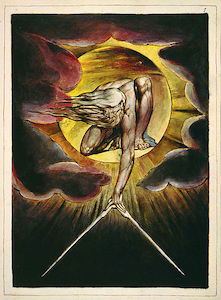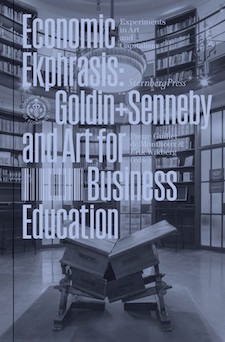İsmail Ertürk RC 77, Senior Lecturer at the University of Manchester, explains how art and economics are becoming intertwined through digital platforms.
ESSAY
 My academic studies of economics have always been informed by my broader interest in humanities, especially culture and arts, going back to my undergraduate years when, at the Middle East Technical University in Ankara, I took electives on arts and philosophy to make sense of mainstream economics’ obsession with formalizing economic life and disembedding it from the social and political processes. At NYU in New York, during my postgraduate years, I was spending as much time in art galleries and arthouse cinemas as I was in economics classes.
My academic studies of economics have always been informed by my broader interest in humanities, especially culture and arts, going back to my undergraduate years when, at the Middle East Technical University in Ankara, I took electives on arts and philosophy to make sense of mainstream economics’ obsession with formalizing economic life and disembedding it from the social and political processes. At NYU in New York, during my postgraduate years, I was spending as much time in art galleries and arthouse cinemas as I was in economics classes.
At the University of Manchester where, for the last fifteen years or so, I have been teaching financialization - a new discipline that studies the present-day capitalism from a multidisciplinary perspective and by conceptualizing the central position of finance in business, daily lives, and economy - I have found like-minded colleagues at the Centre for Research on Socio-cultural Change with whom I have introduced methods and theories from cultural studies into studying economics. Such multidisciplinary initiatives at the University of Manchester are not unusual. The University has several prestigious cultural institutions founded by donations from industrial revolution entrepreneurs, one of which is the Whitworth Art Gallery, named after Sir Joseph Whitworth.
 Joseph Whitworth, an innovator, had made a fortune in the early 19th century from standardizing screw threads. Innovations sometimes can be as simple as creating a standardization to revolutionize an industry as an economic force just like the standardization of railway gauges in the US in the 19th century. The Gallery’s donated collections include prints by William Blake, the 18th century visionary visual artist and poet. I have been in conversations with the current director of the Whitworth Art Gallery on a project called “Economics the Blockbuster,” where the artists imagine alternative socially useful economic systems, and artists and economists engage in cultural economy dialogues on societal context of businesses and contemporary economic activities. When NFTs emerged with a bang from Beeble’s $69.3 million sale of his work “Everydays: The First 5000 Days”, the director of the Whitworth approached me to discuss incorporating NFTs into the “Economics the Blockbuster” project. I joined in the earlier conversations that finally led to minting an NFT from William Blake’s print “The Ancient Days”, which is about creation and technical precision in arts with references to the biblical creation stories. Therefore, the subject of “The Ancient Days” was appropriate for what NFTs represent as a technological innovation.
Joseph Whitworth, an innovator, had made a fortune in the early 19th century from standardizing screw threads. Innovations sometimes can be as simple as creating a standardization to revolutionize an industry as an economic force just like the standardization of railway gauges in the US in the 19th century. The Gallery’s donated collections include prints by William Blake, the 18th century visionary visual artist and poet. I have been in conversations with the current director of the Whitworth Art Gallery on a project called “Economics the Blockbuster,” where the artists imagine alternative socially useful economic systems, and artists and economists engage in cultural economy dialogues on societal context of businesses and contemporary economic activities. When NFTs emerged with a bang from Beeble’s $69.3 million sale of his work “Everydays: The First 5000 Days”, the director of the Whitworth approached me to discuss incorporating NFTs into the “Economics the Blockbuster” project. I joined in the earlier conversations that finally led to minting an NFT from William Blake’s print “The Ancient Days”, which is about creation and technical precision in arts with references to the biblical creation stories. Therefore, the subject of “The Ancient Days” was appropriate for what NFTs represent as a technological innovation.
Whereas NFTs have a media representation as a new asset class for investors who speculate on the blockchain and cryptocurrency innovations, the Whitworth’s aim was to monetize its collections to be able to finance the Gallery’s projects to make art accessible to the University’s surrounding communities and especially to unprivileged youth. In a way the Gallery’s aim was to do a Robin Hood with the NFTs and to redistribute the speculative wealth invested in cryptocurrencies and NFTs. However, as a socially and environmentally responsible art institution, in minting an NFT, the Whitworth could not use the environmentally harmful Ethereum blockchain whose “proof-of-work” computer calculations consume huge amounts of energy. Our NFT advisor, the digital art specialist Vastari Labs, instead, introduced us to the creators of Tezos, a “proof-of-stake” blockchain-based cryptocurrency that uses radically less energy in minting NFTs.
 I have been working with contemporary artists over the years and especially with the Swedish duo Goldin+Senneby to critically reflect on the financialized economy of our times. Stockholm School of Economics has recently published a book on Goldin+Senneby, for which I wrote a chapter, and uses the book, Economic Ekphrasis, as a textbook for its business students. My research in FinTech, digital finance, cryptocurrencies as financial innovation that fuels the financialization of our present-day capitalism has gained new practical and intellectual dimensions while observing and partly participating in the minting of “The Ancient Days”. However, I am critical of the claims by the proponents of NFTs that NFTs will revolutionize the political economy of the art market by liberating artists economically from art intermediaries. In my view, digital platforms, in institutionalized forms of blockchain specialists, cryptocurrency exchanges, digital service providers, NFT exchanges, etc., are simply replacing the old art intermediaries like physical galleries and auction houses. It is not difficult to guess that some of the old intermediaries are likely to transform themselves into NFT intermediaries both for artists and a new class of digital art collectors.
I have been working with contemporary artists over the years and especially with the Swedish duo Goldin+Senneby to critically reflect on the financialized economy of our times. Stockholm School of Economics has recently published a book on Goldin+Senneby, for which I wrote a chapter, and uses the book, Economic Ekphrasis, as a textbook for its business students. My research in FinTech, digital finance, cryptocurrencies as financial innovation that fuels the financialization of our present-day capitalism has gained new practical and intellectual dimensions while observing and partly participating in the minting of “The Ancient Days”. However, I am critical of the claims by the proponents of NFTs that NFTs will revolutionize the political economy of the art market by liberating artists economically from art intermediaries. In my view, digital platforms, in institutionalized forms of blockchain specialists, cryptocurrency exchanges, digital service providers, NFT exchanges, etc., are simply replacing the old art intermediaries like physical galleries and auction houses. It is not difficult to guess that some of the old intermediaries are likely to transform themselves into NFT intermediaries both for artists and a new class of digital art collectors.
The investors in NFTs are mostly investors in blockchain and cryptocurrencies who are looking for new asset classes in these technologies, and NFTs fit the bill for such financialized behavior. I doubt that these new type of digital art collectors care much about artistic values and artists’ precarious economic conditions. In my financialization studies lingo I see NFTs, in their current form, as an expansion of financialization into the art world. I do not believe that NFTs are a solution to the artists’ political economy problem in property rights regarding the creation and the circulation of their artwork. However, I am not against the experimentation with NFTs, just like the one at the Whitworth that I described above. In the history of art there have been unintended consequences when technology, capitalist search for profit, and art come together. Cinema was not invented as an art form but has become the defining art form of the 20th century. However, video art and holographic art could not outlast the speed of change in technology in recording of audio-visual data.
I am sure there will be artists who will create interesting new digital art using the technological opportunities created by blockchain and related innovations.
A new political economy of art can emerge too as a new generation of artists with skills and imagination in blockchain is experimenting continuously. These new generation artists’ experimentations in blockchain technologies and NFTs can influence the economic use of such innovations with more socially useful consequences.
It is certain that the art market will change with the new smart contracts and distributed ledger technologies that are embedded in NFTs, but art itself will persist because of its aesthetic qualities and its powerful ability to ask radical questions about human and social conditions. As a cultural economist NFTs are serving me well, too, in studying present-day financialized capitalism through the prism of the relationship between art and the economy.
Published July 2022




